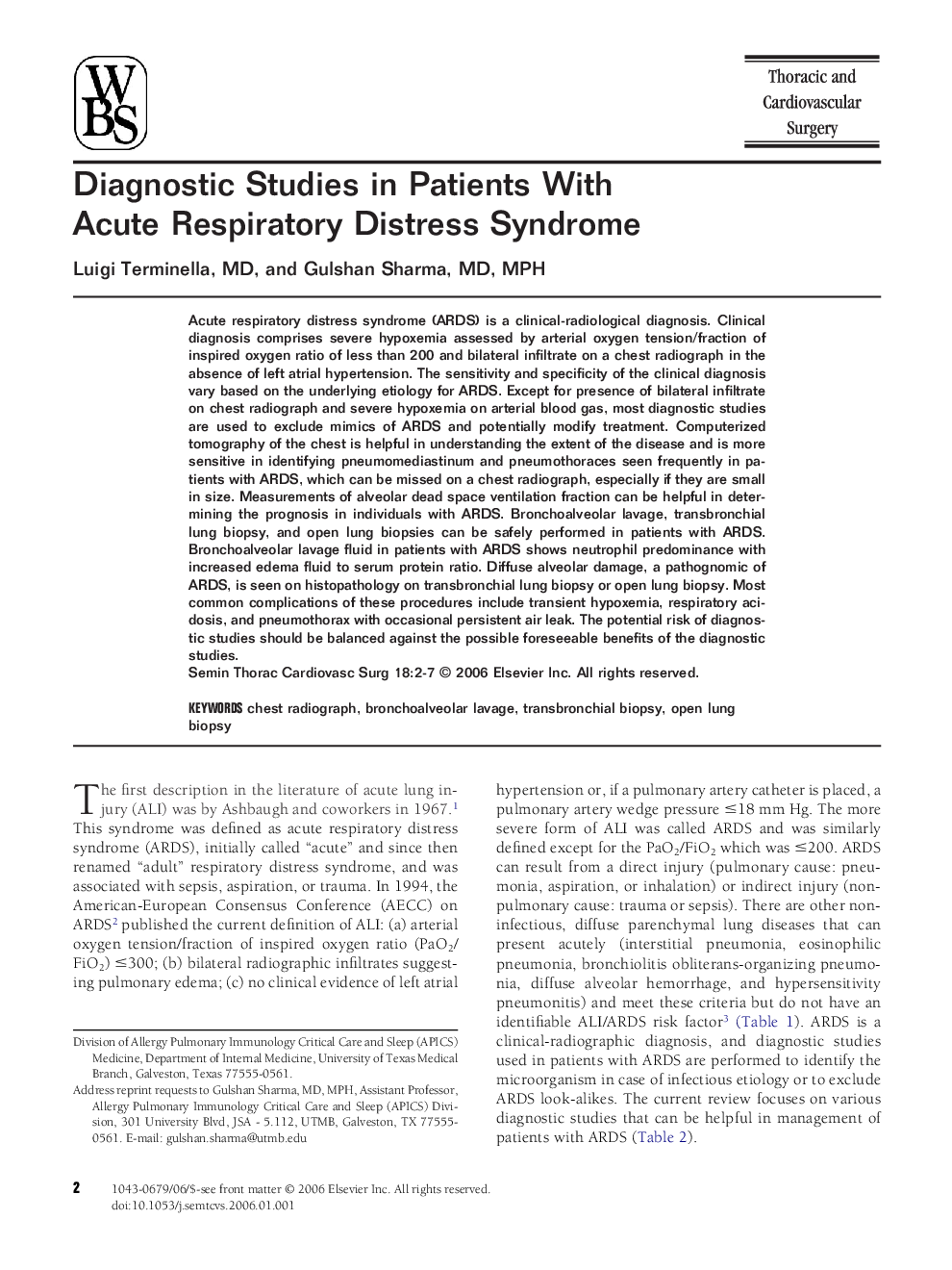| Article ID | Journal | Published Year | Pages | File Type |
|---|---|---|---|---|
| 3025750 | Seminars in Thoracic and Cardiovascular Surgery | 2006 | 6 Pages |
Acute respiratory distress syndrome (ARDS) is a clinical-radiological diagnosis. Clinical diagnosis comprises severe hypoxemia assessed by arterial oxygen tension/fraction of inspired oxygen ratio of less than 200 and bilateral infiltrate on a chest radiograph in the absence of left atrial hypertension. The sensitivity and specificity of the clinical diagnosis vary based on the underlying etiology for ARDS. Except for presence of bilateral infiltrate on chest radiograph and severe hypoxemia on arterial blood gas, most diagnostic studies are used to exclude mimics of ARDS and potentially modify treatment. Computerized tomography of the chest is helpful in understanding the extent of the disease and is more sensitive in identifying pneumomediastinum and pneumothoraces seen frequently in patients with ARDS, which can be missed on a chest radiograph, especially if they are small in size. Measurements of alveolar dead space ventilation fraction can be helpful in determining the prognosis in individuals with ARDS. Bronchoalveolar lavage, transbronchial lung biopsy, and open lung biopsies can be safely performed in patients with ARDS. Bronchoalveolar lavage fluid in patients with ARDS shows neutrophil predominance with increased edema fluid to serum protein ratio. Diffuse alveolar damage, a pathognomic of ARDS, is seen on histopathology on transbronchial lung biopsy or open lung biopsy. Most common complications of these procedures include transient hypoxemia, respiratory acidosis, and pneumothorax with occasional persistent air leak. The potential risk of diagnostic studies should be balanced against the possible foreseeable benefits of the diagnostic studies.
